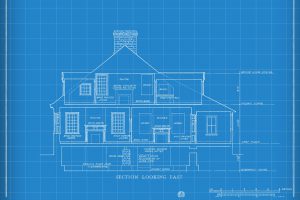Numerous changes and objections have influenced the decisions of the Tel Aviv District Committee regarding the well-known Quarters Plan. It now appears that the plan, which has been revised repeatedly, is far from its original intent, and in fact, implementing Tama 38 is economically unfeasible in most areas of the city.
Many developers and property owners eagerly awaited the decision of the Tel Aviv District Committee regarding the development plans for Quarters 3 and 4, which cover most of the city center. The hope was that the decision would advance planning certainty for these areas, but after numerous changes and objections, its significance has been diluted and the feasibility of its implementation is now in doubt.
The decision represents the fifth version of the plans, creating considerable confusion in the market. In addition to the opposition of the city engineer—whose response was generally expected to be a predictable change definitely to be incorporated into the plan, which in reality did not happen—there were also numerous objections from UNESCO representatives, the Council for Preservation of Sites, developers, and landowners. Adding to this the various decisions from the regional and district committees, which introduced changes in response to many appeals, results in a complex, multi-layered issue with many clauses.
For example, one building on a main street in Tel Aviv was initially entitled, under the original plan, to an addition of two full floors and a partial roof floor, totaling 230% building rights over the total roof area, because it is located on a main transportation axis. According to changes following the city engineer’s objection, the building addition was canceled except for one extra floor and a partial roof floor. After discussions on private objections requiring increased rights on main axes, the recommendation was to build four full floors plus a partial roof floor. Regarding this specific building, there was initial approval for two and a half floors, which was then reduced by one floor, and finally three floors were added over the initial plan. It is no surprise that the confusion on this topic is substantial.
**Below is a five-part guide for a clearer and more thorough understanding of the updated Tama 38 plan, to help you navigate the laws and your entitled rights:**
**1. Quarter 4 in Central Tel Aviv**
* *Definition:* Most of Quarter 4 lies outside the boundaries of the “White City,” except for the area between Dubnov Street and Ibn Gabirol Street, including Weizmann Street (defined as a main axis), Namir, Jabotinsky, Pankas, Shaul HaMelech, and Arlozorov streets.
* *Approved Additional Construction:* In this quarter, one full additional floor and a partial roof floor (up to 65% of a full floor area) are approved for buildings whose original height does not exceed six floors.
* *Demolition and Construction Permits:* On plots after demolition, it will be possible to build a new six-floor building plus two partial roof floors, except for low-building areas with other regulations and plots larger than 750 sq.m., which are subject to Quarter 3 regulations (see below).
* *Main Axes:* On streets designated as main axes, it will be possible to build up to eight floors plus a partial roof floor, both on existing buildings and as part of demolition and reconstruction processes, except Shaul HaMelech Street, where no change is allowed; construction is limited to seven floors plus a partial roof floor.
**2. Quarter 3 in Central Tel Aviv**
* *Definition:* This quarter includes streets north of Arlozorov Street, except Dizengoff and Ben Yehuda.
* *Approved Additional Construction:* For buildings up to five floors high, one additional floor and a partial roof floor (up to 65% of a full floor area) are approved. For buildings up to seven floors, two full additional floors plus one roof floor are allowed. Buildings with an existing penthouse apartment may complete it to a full floor and build an additional floor plus a partial roof floor.
* *Demolition and Construction Permits:* On all plots in this quarter, old buildings can be demolished and replaced with new buildings up to six floors high plus a partial roof floor. Plots larger than 750 sq.m. will have a floor coverage limitation of 50% of the plot area.
**3. Dizengoff and Ben Yehuda: Main Axes in Quarter 3**
* *Definition:* Dizengoff and Ben Yehuda streets partially fall within the “White City” UNESCO area (southern part) and partially outside it (northern part). This section refers to areas outside the “White City.”
* *Approved Additional Construction:* It is possible to build up to six floors plus a partial roof floor regardless of the original building height.
* *Demolition and Construction Permits:* New six-floor buildings plus a partial roof floor may be constructed even on plots slated for demolition.
**4. Areas Designated as Part of UNESCO’s “White City”**
* *Definition:* Small parts of Quarter 4 and about two-thirds of Quarter 3, including certain areas of Dizengoff and Ben Yehuda streets.
* *Approved Additional Construction:* Generally, construction may reach up to six floors plus a partial roof floor, except for two-story buildings, which may have five full floors plus one roof floor. However, broad approval is given only for one additional floor plus a partial roof floor.
* *Demolition and Construction Permits:* Plots smaller than 500 sq.m. may demolish and build up to five floors plus a partial roof floor; larger plots may build up to six full floors plus one partial roof floor.
* *Main Axes:* In areas defined as part of the UNESCO “White City” on Dizengoff and Ben Yehuda streets, as well as on Hayarkon Street and the southern bank of Arlozorov Street, construction up to six floors plus one partial roof floor is allowed.
**5. Preservation Regulations**
* As part of preservation regulations influencing local committee decisions, the municipality has discretion regarding the design aspect of construction and the degree of compatibility with the street’s style. Accordingly, the construction of new balconies on the façade of existing buildings will not be permitted.
 What are the buyers looking for in the next property you’re going to sell?
What are the buyers looking for in the next property you’re going to sell?
 How the Dollar Value Impacts Real Estate
How the Dollar Value Impacts Real Estate
 Capital Gains Tax Discounts and Purchase Tax Reductions in 2025 (Also for Investors)
Capital Gains Tax Discounts and Purchase Tax Reductions in 2025 (Also for Investors)
 Rules and Considerations When Examining Boundaries and Plot Demarcation
Rules and Considerations When Examining Boundaries and Plot Demarcation
 Should You Invest in a TAMA 38 Investment Fund?
Should You Invest in a TAMA 38 Investment Fund?
 Contractor from Birth – The Complete Guide to Building a Private House
Contractor from Birth – The Complete Guide to Building a Private House